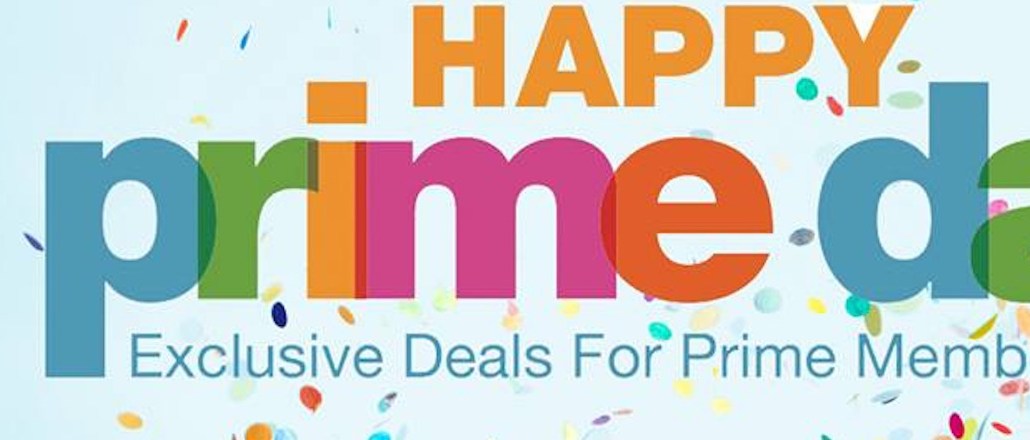
“More deals than Black Friday.” That was Amazon’s bold claim for its inaugural Prime Day today, an event celebrated with colorful fonts promising blockbuster prices and not-to-be-missed deals.
Besides luring people in with discounted Kindles and toilet paper, the goal is to get shoppers to sign up to its $99 plan so they spend even more money later this year.
“The biggest impact to Black Friday will likely be that this event will lock more shoppers to Amazon for online deals when the holiday shopping season arrives,” Ken Madden, head of engagement at Shoptology, told Digiday. “Anyone they lock in today is someone who is less likely to fork over another $50 for Walmart’s new Shipping Pass service closer to the holiday.”
To combat flash-sale FOMO, Walmart and Target also rolled out similar sales promising “unbelievable” prices on electronics, clothes and home goods today. Walmart shaded Amazon, writing on its blog that “you shouldn’t have to pay $100 to get great deals.”
So, are the deals even worth it? Let’s look:
Amazon is offering a Samsung 50-inch 4K Ultra HD 3D TV and a 4K video pack for $999, a 66 percent discount compared to buying the items separately. Walmart is offering the TV alone for $1,097 and Target has a 55-inch version of the TV for $1,199. Amazon wins this round, but there are much better and cheaper (albeit smaller and less fancy) TVs on sale on all three websites.
Another deal Amazon is touting is a two-piece Rockland Luggage set for $99, which normally retails for $330. It’s already sold out, though, but if you missed out, Target and Walmart both have it on sale and in stock at similar prices (the former is only $2 more).
What about something really boring but practical? Amazon is selling a Black and Decker cordless “dust buster” for $47.99, nearly $80 cheaper than what it normally retails at. Walmart is selling the same model for $50, but Target has the best deal. Although it’s not the same model, a Black and Decker vacuum is on sale for $37 with a free $20 gift card plus free shipping.
The bottom line is that shoppers may not get deep discounts on items they want, but today’s the day to buy things you need, like a vacuum cleaner. With all three retailers offering similar prices, you don’t need to sign up for a pricey $99 Amazon Prime membership.
Shoppers have been largely disappointed in Amazon Prime Day. They’re venting frustration on Twitter, likening it to a “garage sale” that pales in comparison to Black Friday. Nearly 40 percent of tweets are negative, according to data from Brandwatch.
Thank you, Amazon, for not putting anything on sale for #PrimeDay that I’m remotely interested in. You’ve helped my bank account.
— A. Clark Thompson (@AshleeEats) July 15, 2015
$1 off a “deal of the day”? Come on Amazon you can do better than that #PrimeDay fail pic.twitter.com/6ZvHVyFkqa
— Scott Richards (@Scott_Richards) July 15, 2015
LOL #PrimeDay is so trash man. Had me hyped up to buy a TV. All the sales are on paper towels & headphones.
— DJ (@LordDerrick) July 15, 2015
.@amazon #PrimeDay is a bust. It’s a mish mosh of crap. A garage sale.
— Brant’s Rants (@BrantsRants) July 15, 2015
Current #PrimeDay feels. pic.twitter.com/x4QOx5jmMZ
— nellie A. (@BklynActiveMama) July 15, 2015
You call these deals? #PrimeDay pic.twitter.com/z0UrJoNtnA
— Jordan Veilleux (@veilleuxwho) July 15, 2015
More in Marketing

Pitch deck: How Amazon is recasting Twitch as a core part of its CTV pitch
Amazon is positioning Twitch as a defining asset in its CTV ambitions.

Netflix transforms former mall department stores into experiential venues
The location in Dallas opens this week, and one at the King of Prussia mall near Philadelphia opened last month.

Future of Marketing Briefing: AI has created a new talent paradox in programmatic agencies
The job isn’t execution anymore. AI handles that. The job is judgement.





